In compliment to the United States Army on the occasion of its 250th birthday, “Un-Woke in Indiana” is honored to present this gallery of historic U.S. Army Colors, Flags, and Guidons.
The Continental Colors served as the first national flag of the United States of America. Combining a field of thirteen stripes with the British Union Flag, it symbolized the colonies’ continuing loyalty to the Crown while proclaiming their unity in defense of their liberties. This flag was hoisted as an ensign aboard the Alfred, a warship of the Continental Navy that was commissioned at Philadelphia on 2 December 1775. (Her captain was Lieutenant John Paul Jones.) The story that it was raised on New Year’s Day, 1776, over Prospect Hill near General George Washington’s headquarters in Cambridge, Massachusetts, is generally accepted but disputed by some historians. There is no doubt, however, that the Continental Colors were widely employed by the Continental Army as a garrison flag and regimental color, and by the Continental Navy as an ensign, and that it thus became, in fact if not in law, the first national flag of the United States of America following the signing of the Declaration of Independence on the Fourth of July, 1776. But its brief career in that capacity came to an end on 14 June 1777, when the Continental Congress adopted a resolution establishing the Stars and Stripes as the U.S. national flag.
Infantry regiments of the Union Army carried a National Color and a Regimental Color. Both colors were made of silk and ornamented with a fringe of knotted yellow silk. The Regimental Color of most volunteer regiments was the same as that shown above for the 4th U.S. Infantry, though sometimes the artistic rendition of the national coat of arms varied. But some regiments carried a state flag as the Regimental Color, and a few had a Regimental Color of unique design. That of the 55th New York Volunteers was based on the French Tricolor. Because it escorted the Marquis de Lafayette through New York City on the occasion of his visit to the United States in 1824, the regiment bore the title Gardes Layfayette. The 69th New York Volunteers was raised from New York City’s Irish immigrant community and was one of the five regiments constituting the famed Irish Brigade of the Army of the Potomac.
At the beginning of the Civil War, US Army cavalry and artillery guidons were made of silk, red over white with the regimental number and troop or battery letter countercharged. In January 1862, however, a War Department order specified a stars-and-stripes pattern for guidons. The stars and unit designations were painted on. Since silver paint tended to tarnish, the stars and designations were usually rendered in gold.
During World War I, the colors of U.S. Army regiments confirmed to a standard pattern. The National Color was the national flag, without any inscriptions. The Regimental Color had a field in the primary branch color of the regiment: dark blue for Infantry; yellow for Cavalry; scarlet for Field Artillery, the Coast Artillery Corps and the Corps of Engineers, and so on. The Regimental Color bore the national coat of arms in proper colors over a scroll inscribed with the regimental designation.
During World War II, U.S. Army organizations above the level of the regiment had distinguishing flags rather than silk colors. These flags were made of wool bunting and were issued with a National Standard, Service, also made of bunting, and ornamented with a fringe of knotted silk. By regulation, the standard and the flag were always to be carried or displayed together. Distinguishing flags for divisions were horizontally divided, scarlet over dark blue for infantry and airborne divisions, scarlet over green for armored divisions, and scarlet over yellow for cavalry divisions. The authorized shoulder sleeve insignia of the division was centered on the flag, in proper colors. Groups, which replaced regiments in all branches except Infantry in 1943, had flags either diagonally divided or striped. For striped flags, the field was in the primary branch color and the stripe was in the secondary branch color, e.g. yellow and scarlet for Cavalry. For divided flags, the portion running from upper hoist to lower fly was in the primary branch color and the other portion was in the secondary branch color. The number of the group was centered on the flag.
Appointment flags of the Secretary and Under Secretary of War and the Chief of Staff, U.S. Army, were made in two versions: silk colors with fringe, and field and boat flags made of wool bunting. General officers on staffs and chiefs of branches had field and boat flags only. Stars denoting rank appeared on these flags, one on either side of the insignia for major generals or one star below the insignia for brigadier generals. Generals in field commands had field and boat flags only with a scarlet field and stars according to rank arranged in a horizontal line. For general officers of the Medical Corps and the Chaplains Corps, the field of the flag was dark maroon or purple respectively.
Guidons for company-size units of the U.S. Army have a field in the primary branch color, e.g. yellow for Armor, with insignia, letters, and numbers in the secondary branch color. Exceptions are Infantry, whose guidons are dark blue rather than light blue, the branch color, and Cavalry, whose guidons are of the original nineteenth-century pattern. The regimental or battalion number appears over the insignia and the company letter below it. Battalions of regiments have the battalion number vertically centered to the left of the insignia. Up to the 1960s, guidons were made of wool bunting but now they are made of heavy-duty rayon banner cloth.




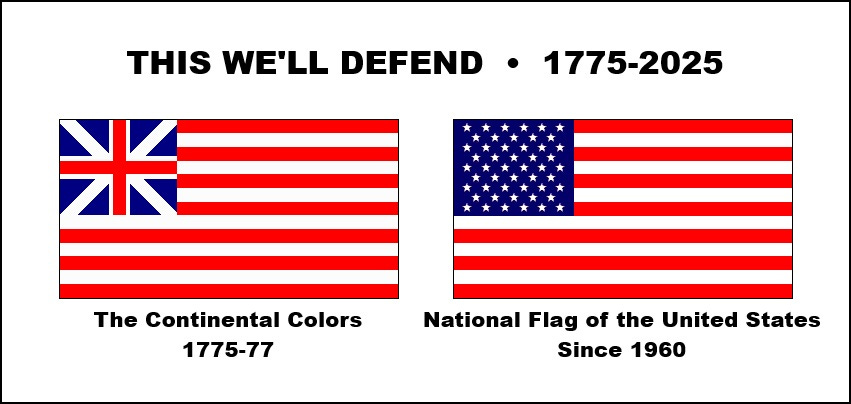
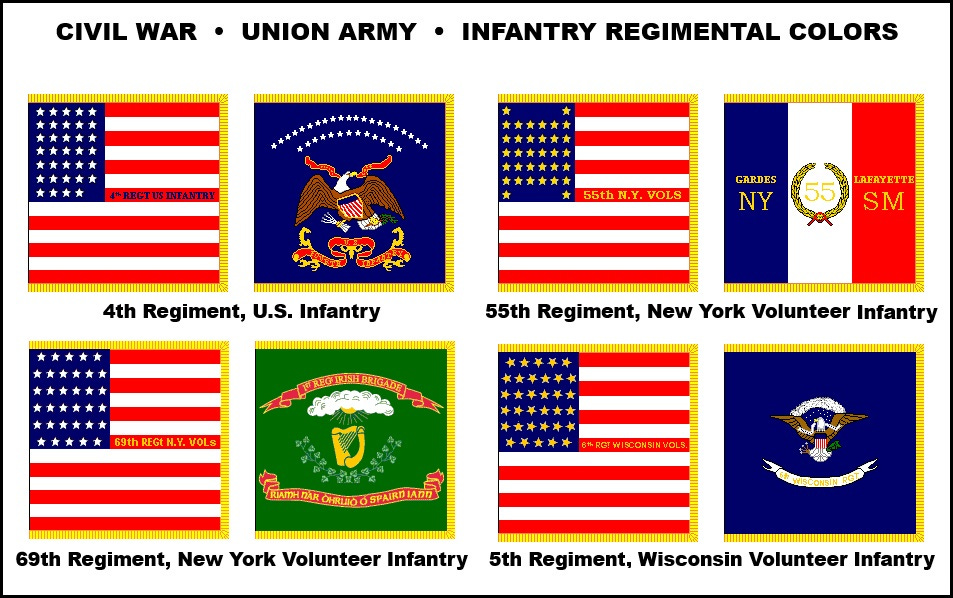
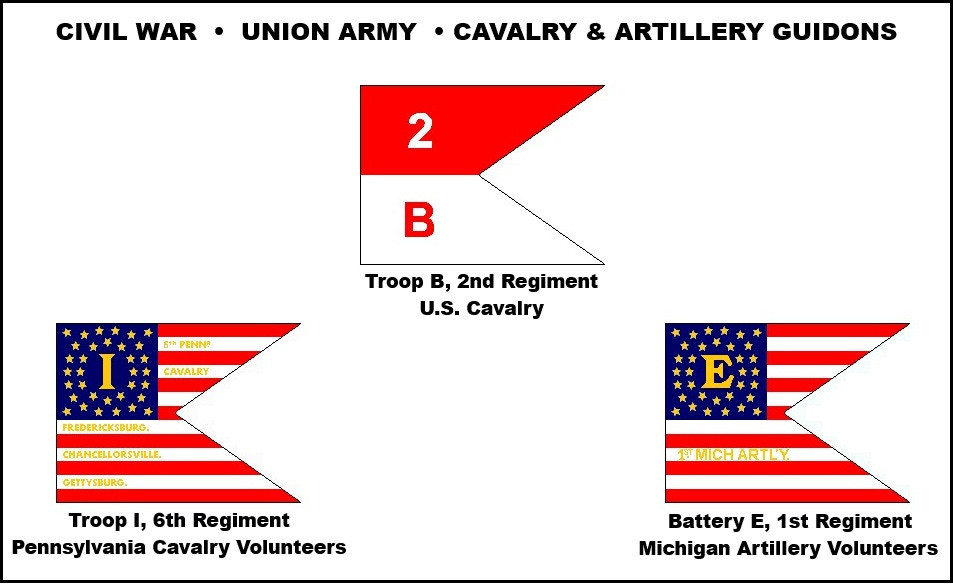
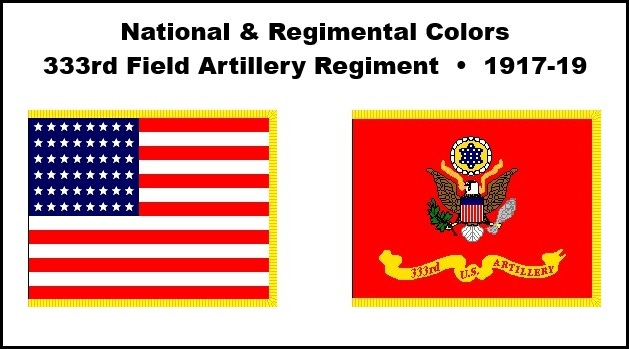
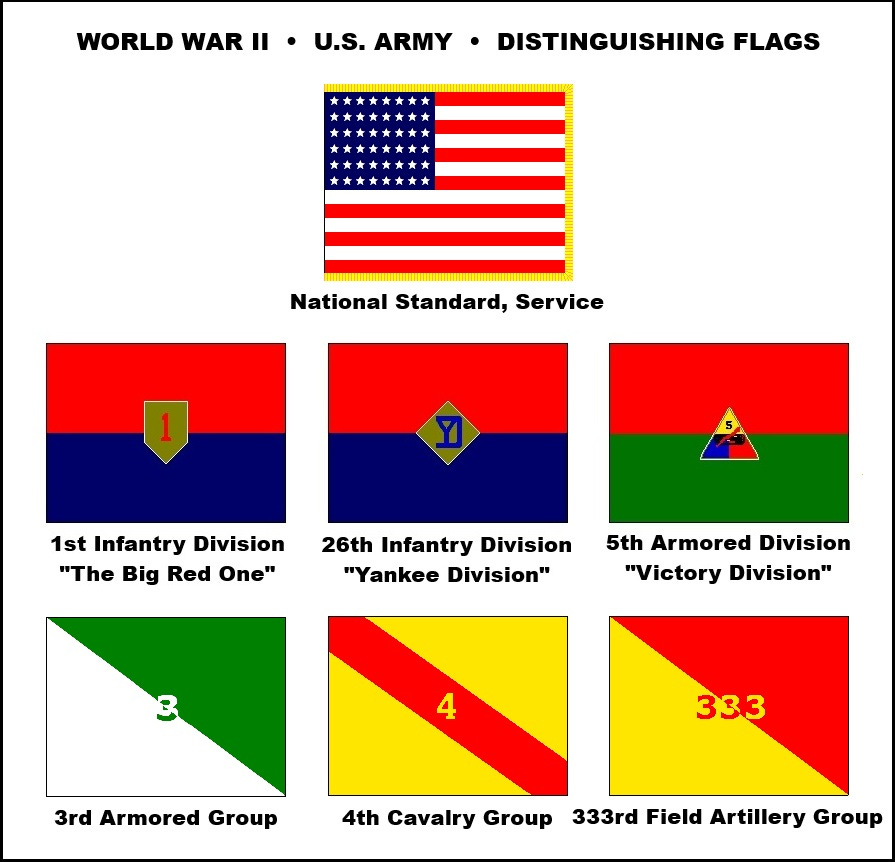
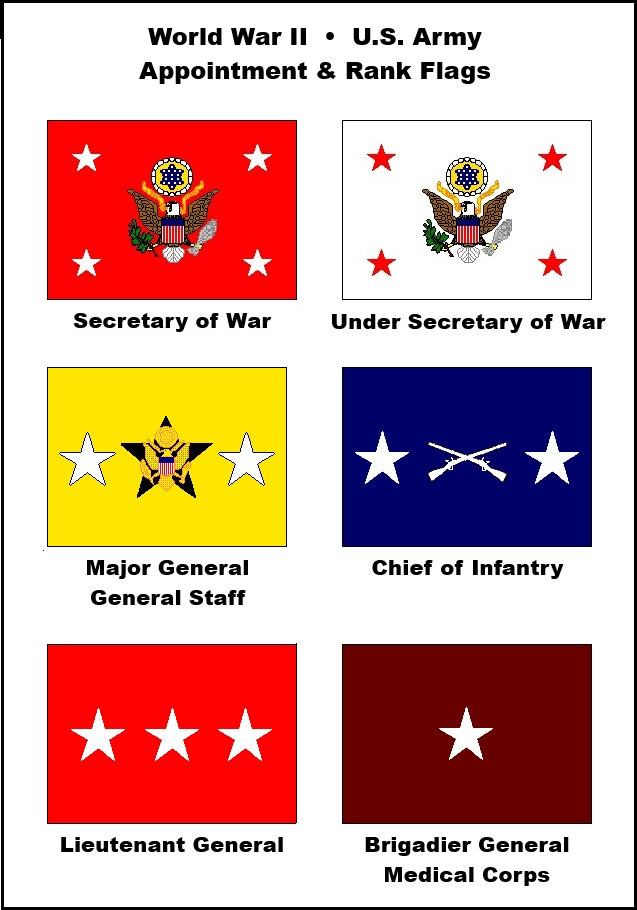
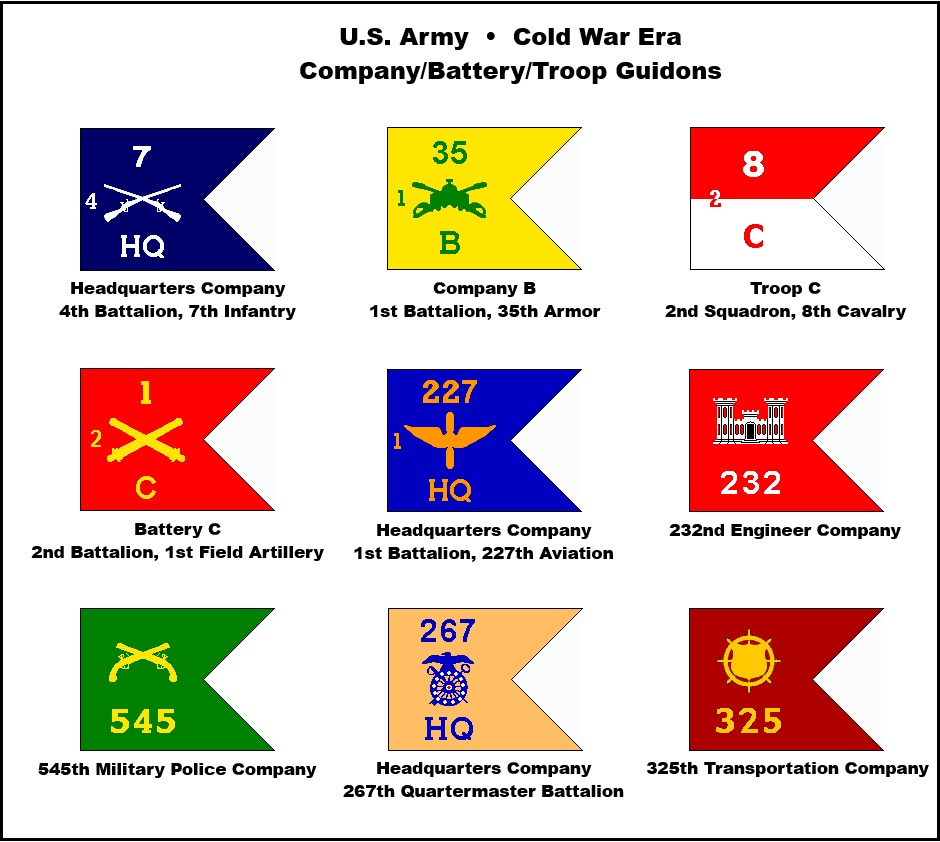
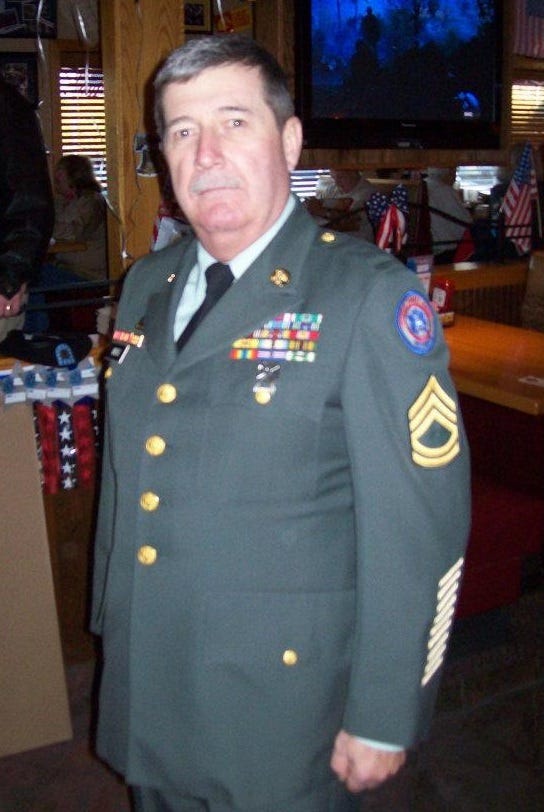
Thanks for the colorful history lesson.